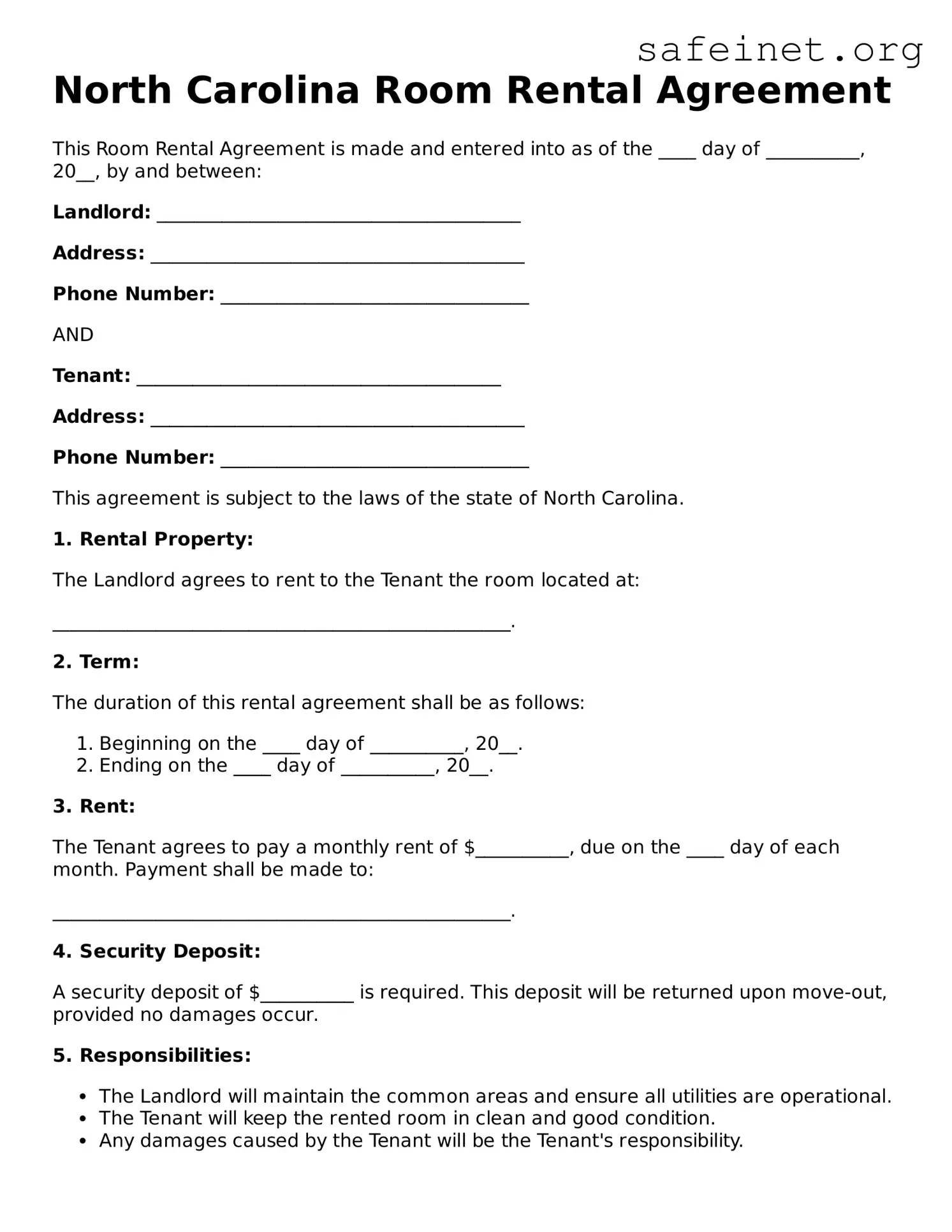What is a North Carolina Room Rental Agreement form?
The North Carolina Room Rental Agreement form is a legal document that outlines the terms and conditions between a landlord and tenant for renting a room in a residential property. It includes essential details such as rental amount, duration of the lease, and the responsibilities of both parties.
What information is required to complete the form?
To complete the form, you need to provide information such as the names and contact details of both the landlord and tenant, the address of the rental property, rental amount, security deposit information, and the duration of the rental agreement.
Is the form legally binding?
Yes, once both parties have signed the North Carolina Room Rental Agreement, it becomes a legally binding contract. Each party is obligated to adhere to the terms specified in the agreement unless amended by mutual consent.
What happens if one party breaches the agreement?
If either party fails to comply with the terms of the agreement, it constitutes a breach of contract. The aggrieved party may seek legal remedies, which could include termination of the agreement or compensation for damages, depending on the severity of the breach.
How can the agreement be terminated?
The North Carolina Room Rental Agreement can be terminated according to the terms outlined in the document. Typically, a written notice is required. The notice period may vary, so it is essential to refer to the agreement for specific terms. If no terms are specified, North Carolina state law may apply.
Can the agreement be modified?
Yes, modifications to the North Carolina Room Rental Agreement can be made if both parties agree to the changes. It is advisable to document any amendments in writing and have both parties sign the revised agreement to ensure clarity and enforceability.
Is a security deposit required?
A security deposit is not mandatory but is commonly requested by landlords to cover potential damages or unpaid rent. If a security deposit is required, the agreement should specify the amount, conditions for its return, and any deductions that may be taken.
What maintenance responsibilities does the landlord have?
The landlord is typically responsible for maintaining common areas and ensuring that the property meets health and safety standards. Specific responsibilities should be clearly outlined in the rental agreement to prevent confusion.
Are there any specific laws governing room rentals in North Carolina?
Yes, room rentals in North Carolina are subject to state landlord-tenant laws. It is important for both landlords and tenants to understand their rights and obligations under these laws, which can provide additional protections beyond those outlined in the rental agreement.
Can a tenant sublet the rented room?
The ability to sublet the rented room should be explicitly addressed in the North Carolina Room Rental Agreement. If the agreement does not permit subletting, the tenant must obtain written approval from the landlord before proceeding. Unauthorized subletting may lead to termination of the agreement.
